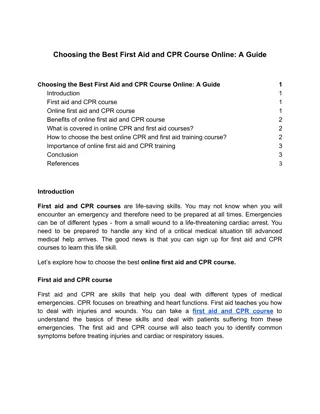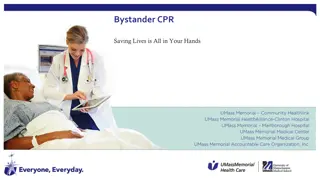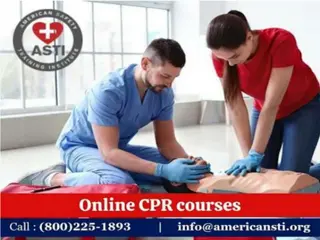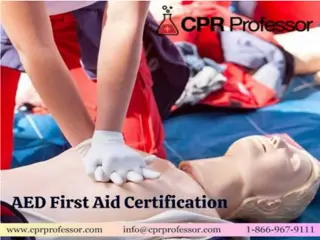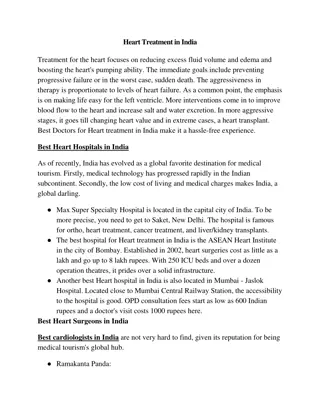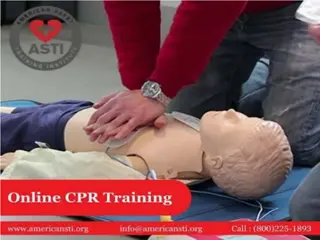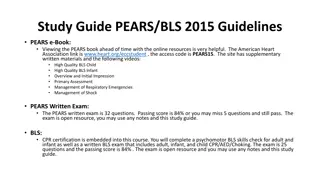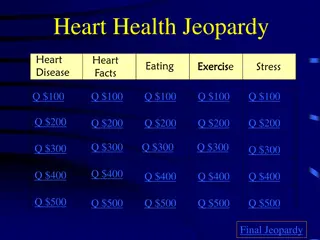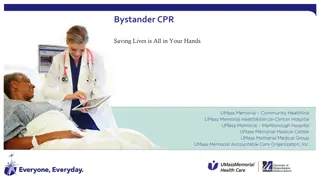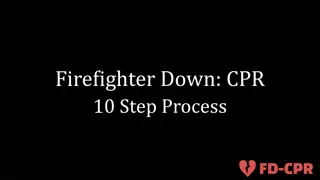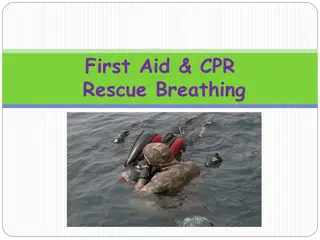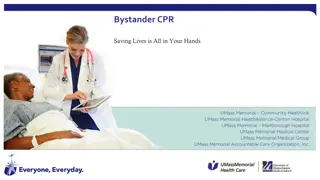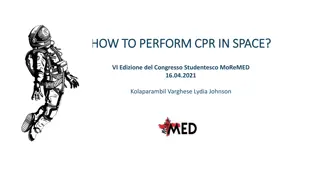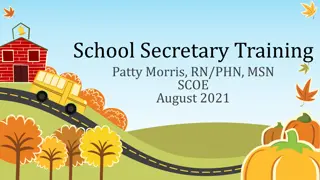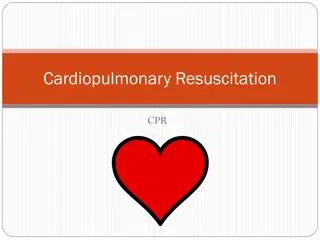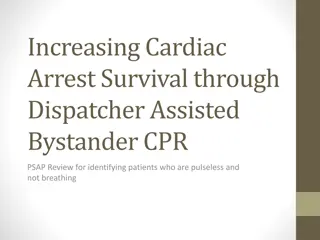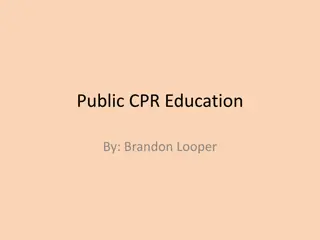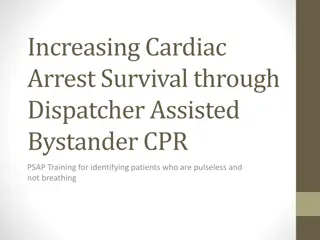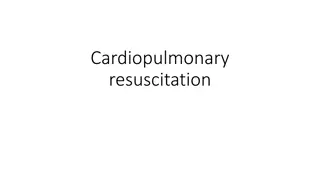Essential CPR Information and Good Heart Living
Cardiopulmonary resuscitation (CPR) is a life-saving technique to revive individuals experiencing cardiac arrest. It involves chest compressions and rescue breathing. Learn about controllable and uncontrollable risk factors for a healthy heart, recognize symptoms of heart attack or stroke, understand the importance of first aid kits and AEDs, and know about Minnesota's Good Samaritan Law. Discover the adult Chain of Survival for emergency response and understand the CAB method for infants, children, and adults. Stay informed and prepared to potentially save lives.
Download Presentation

Please find below an Image/Link to download the presentation.
The content on the website is provided AS IS for your information and personal use only. It may not be sold, licensed, or shared on other websites without obtaining consent from the author.If you encounter any issues during the download, it is possible that the publisher has removed the file from their server.
You are allowed to download the files provided on this website for personal or commercial use, subject to the condition that they are used lawfully. All files are the property of their respective owners.
The content on the website is provided AS IS for your information and personal use only. It may not be sold, licensed, or shared on other websites without obtaining consent from the author.
E N D
Presentation Transcript
Definition: Cardiopulmonary Resuscitation Cardio = heart Pulmonary = lungs Resuscitation = to revive
Terminology BLS ALS CAB EMS
Good Heart Living Controllable risk factors Smoking Hypertension Cholesterol Obesity Lack of exercise Stress Diabetes
Good Heart Living Uncontrollable risk factors Age Sex Race Heredity
Symptoms of Heart Attack or Stroke Heart attack Pain in chest, arm, neck, back, or jaw Shortness of breath Weakness Feeling faint Nausea Unusual perspiration
Symptoms of Heart Attack or Stroke Stroke Sudden severe headache Vision problems Loss of balance Confusion Numbness Speech problems
First Aid Kits AED Face Mask
Minnesotas Good Samaritan Law 1) Duty to Assist: A person at the scene of an emergency who knows that another person is in physical harm, shall give reasonable assistance to the injured person as long as they are not in danger themselves. ~When you turn 18, it is your legal duty to call 911! 2) General Immunity from Liability: A person who renders emergency care, advice, or assistance without compensation, at the scene of an emergency or during transit is NOT liable for any civil damages.
Links in the adult Chain of Survival: 1) Immediate recognition and activation of emergency response system: call 911 2) Early CPR, w/emphasis on chest compressions 3) Rapid defibrillation (AED) 4) Effective advanced life support 5)Integrated post-cardiac arrest care (new)
CABs for Infant ,Child, & Adult C =Compressions: give 30 at a rate of 100 per minute A = Airway (open) Head tilt, chin lift method Jaw thrust method B = Breathing (give two mouth to mouth breaths, chest rises)
New Guidelines The new CAB guidelines applies to infants (1-12 months), children (1-8 years) and adults (8 years +) It does NOT apply to newborns since newborns are usually unconscious due to respiratory complications
Adult CPR Place heel of one hand on sternum between nipples, cover with other hand interlocking fingers Give Compressions, push hard and fast in center of chest 1 1/2 to 2 inches @ 100 per minute Open Airway, give 2 Breaths Repeat this until help arrives
Child CPR Use both hands or the heel of one hand on the sternum between nipples; the other hand is placed on the forehead to maintain head tilt Give 30 Compressions 1 to 1 1/2 inches (1/3 the depth of the chest) @ 100 per minute Open Airway, give 2 Breaths Repeat this until help arrives
Infant CPR Use the tips of 2 fingers on the sternum 1 finger width below the nipples Give 30 Compressions 1/2 to 1 inch ( 1/3 third depth of the chest) @ at least 100 per minute Open Airway by breathing over mouth & nose, give 2 Breaths (puffs) Repeat this until help arrives
Conscious Choking Infant Call 911 If infant can cough or cry place them in a head down, face down position DO NOT give any back slaps or compression
Conscious Choking Infant If there is no sound or sound faint and labored Give 5 back slaps followed by 5 chest compressions Repeat back slaps and chest compressions until object comes out or baby passes out
Unconscious Choking Infant Check for consciousness Call 911 Attempt ABC s When first breath fails, re-tip and try again
Unconscious Choking Infant When second attempt fails Give 30 chest compressions Do a foreign object check Sweep mouth with your pinky ONLY IF OBJECT IS VISIBLE Attempt to give breath If breath is unsuccessful repeat this routine beginning with compressions
Conscious Choking Child/Adult: The Heimlich Maneuver Ask victim if they are choking If unable to speak, ask if they want the Heimlich maneuver Call 911 Stand behind them, off-centered Reaching under their arms place the thumb side of one fist between the navel and the sternum Cover that fist with your other hand and begin upward, inward thrusts Continue until object comes out or victim passes out
Unconscious Choking Adult Check for consciousness Call 911 Begin ABC s If breath attempt fails, re-tip and try again
Unconscious Choking Adult If second breath fails give 30 CPR style compressions Check for foreign objects, remove any that are seen Attempt to give a breath If breath fails repeat routine beginning with compressions


